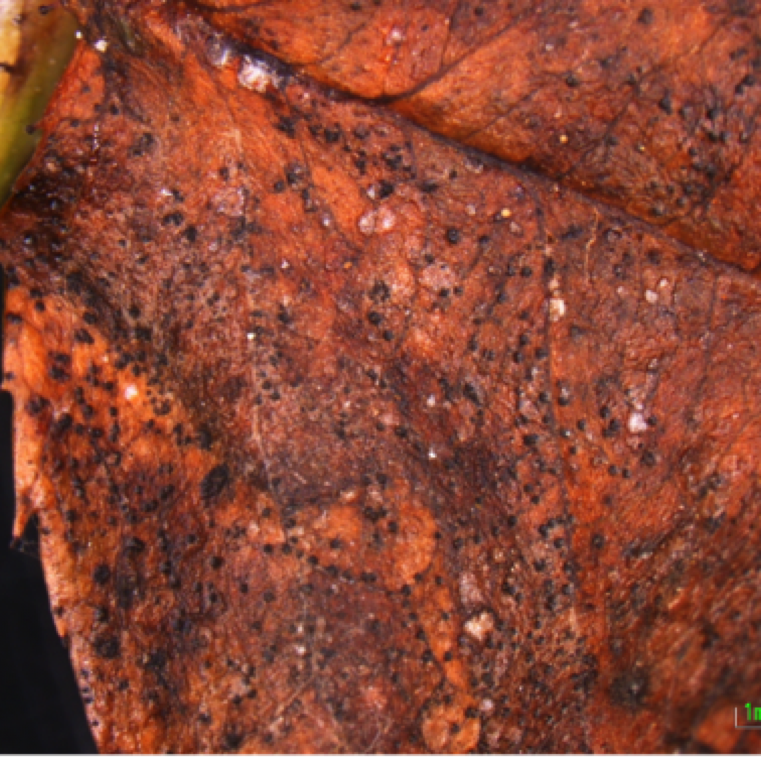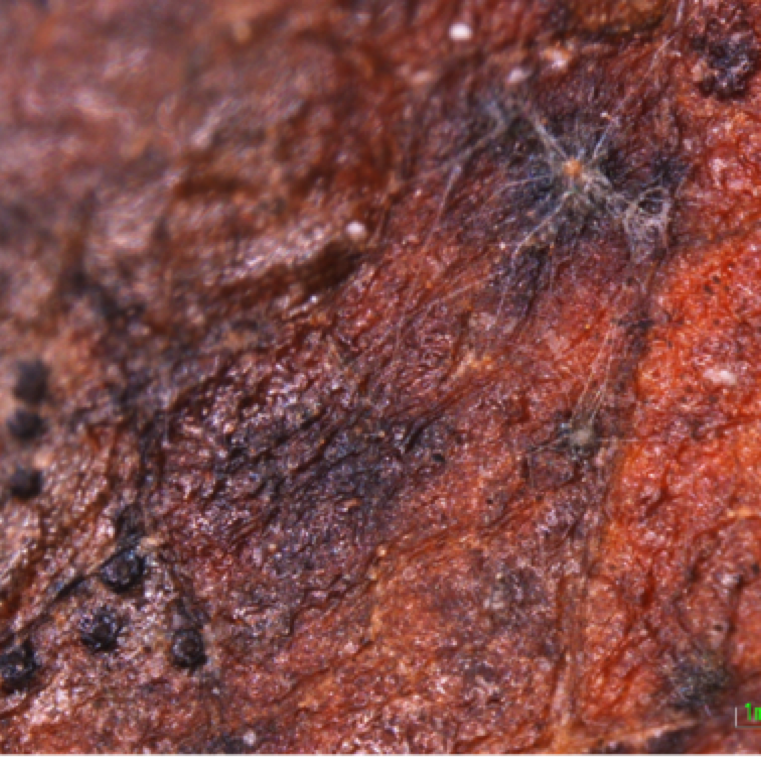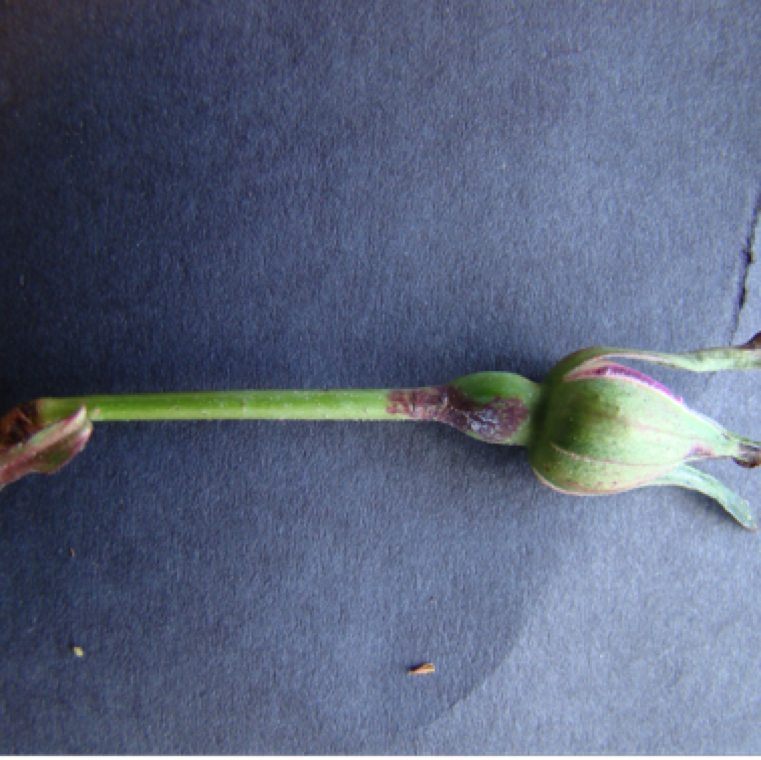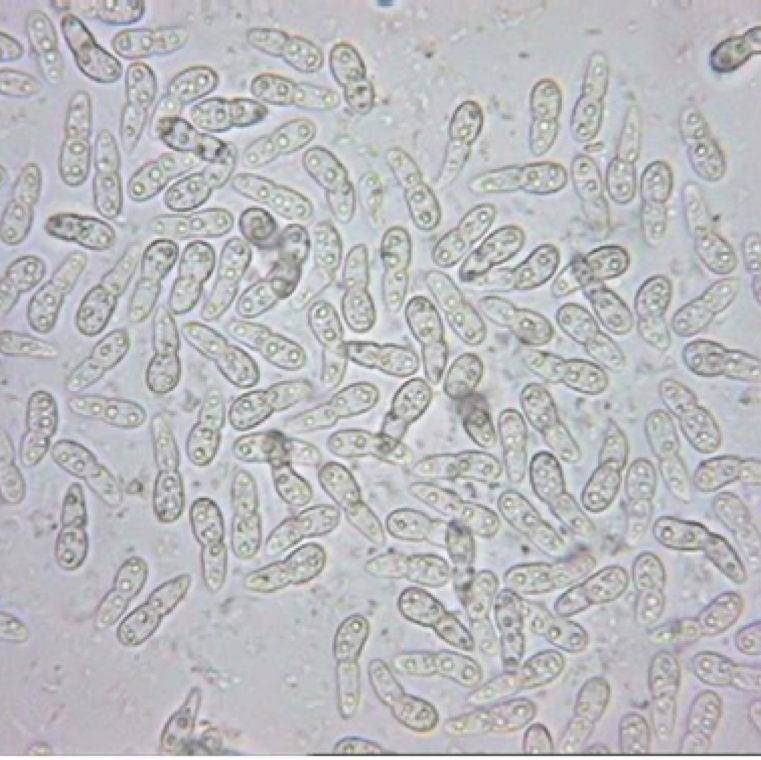

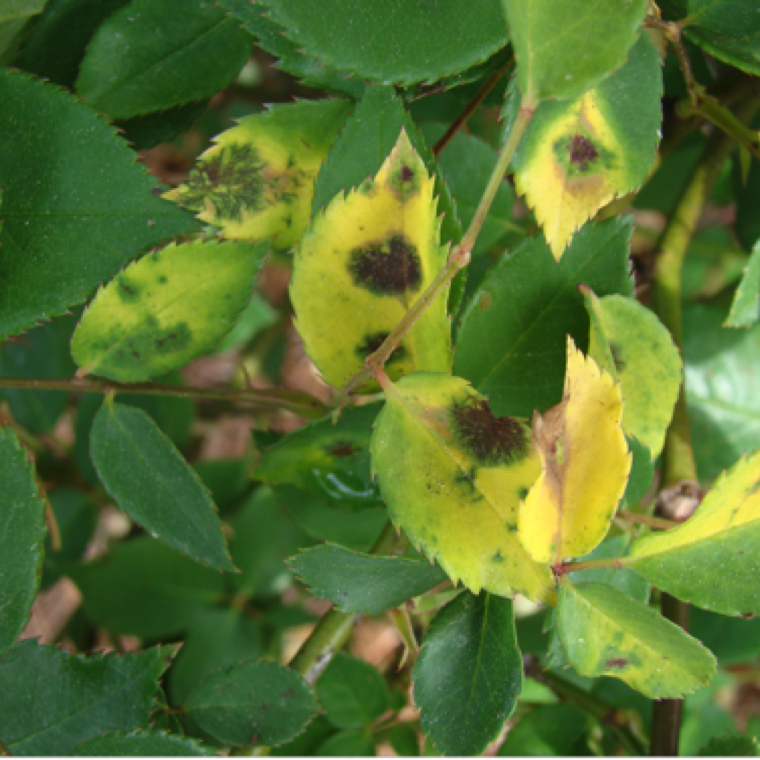
Black spot is the most serious disease on roses in Florida. Various genotypes of M. rosae, i.e isolates that infect a specific cultivar or group of cultivars, are currently present.
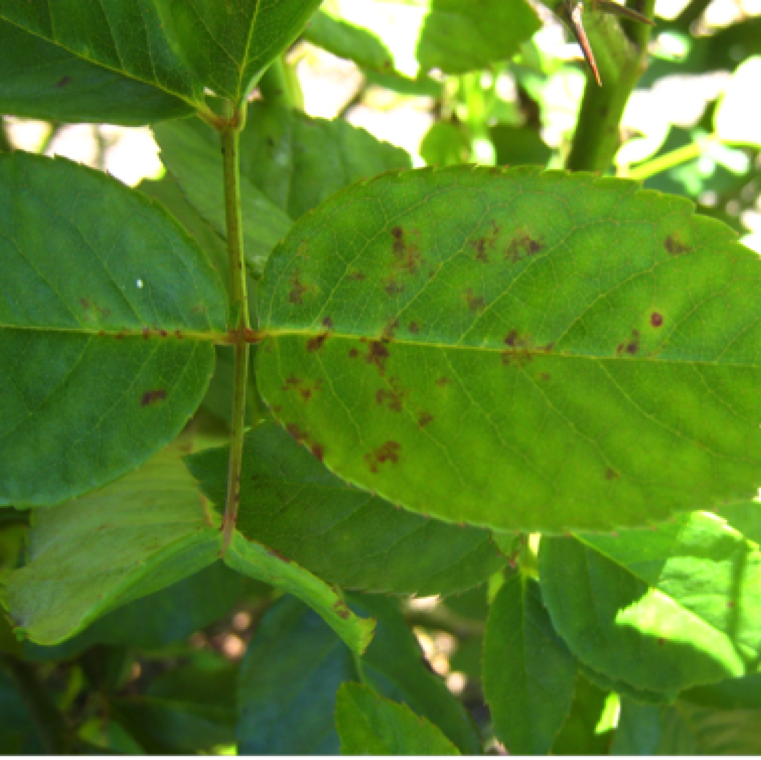
The black spot symptoms start as small black spots on the upper surface of the leaves. Lesions can vary in size on the leaf surfaces.
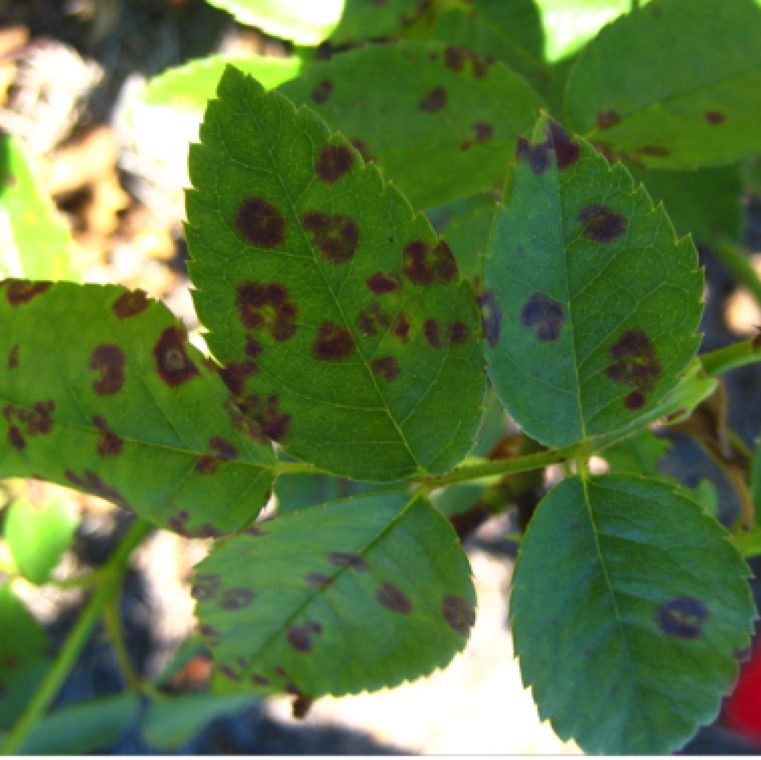
These spots may have unique feathery borders. The leaves subsequently turns yellow around the black spot lesions finally leading to severe defoliation.
BLACK SPOT
Fungal causal agent: Marssonina rosae (Diplocarpon rosae; sexual stage)
Rose diseases
